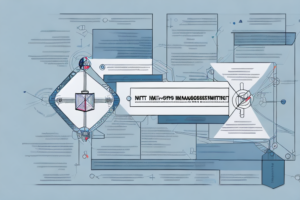What is vulnerability assessment methodology in RMF?

A computer system with a security shield around it
With cyber threats becoming increasingly prevalent, it has become imperative for organizations to ensure the security of their systems and data. One of the crucial methods for doing so is vulnerability assessment (VA). This methodology is a process of identifying security flaws, vulnerabilities, or weaknesses in an information system, network, application, or organization. The purpose of VA is to examine the security posture of an organization and provide recommendations for improving it. In this article, we will delve into the vulnerability assessment methodology in the context of RMF and explore its importance, benefits, challenges, and best practices.
Understanding RMF and Its Importance in Vulnerability Assessment
RMF (Risk Management Framework) is a structured process that enables organizations to manage risks to their information systems effectively. It is a holistic approach to managing information security risks and encompasses all aspects of risk management, including identification, assessment, mitigation, and monitoring. One of the essential components of the RMF is vulnerability assessment, which is crucial for maintaining the security of an organization. RMF provides a guideline for implementing a risk-based approach to security and ensures that the vulnerability assessment methodology is consistent across organizations while catering to their unique needs.
Another critical aspect of RMF is the continuous monitoring of the security posture of an organization. This involves regularly assessing the effectiveness of security controls and identifying new vulnerabilities that may arise. Continuous monitoring ensures that an organization is always aware of its security status and can take appropriate measures to address any issues promptly.
RMF also emphasizes the importance of collaboration and communication between different stakeholders in an organization. This includes IT personnel, security professionals, and business leaders. By working together, these stakeholders can ensure that security risks are identified and addressed in a timely and effective manner, minimizing the impact of any potential security incidents.
The Basics of Vulnerability Assessment Methodology
The vulnerability assessment methodology consists of a series of steps that enable the identification, assessment, and mitigation of security vulnerabilities. The process starts with defining the scope of the assessment and identifying the assets to be assessed. The next step is to identify the vulnerabilities in the assets through scanning, testing, or other techniques. Once the vulnerabilities are identified, the next step is to assess the risks associated with each vulnerability and prioritize them based on the likelihood and impact of exploitation. Once the risks are assessed, the organization can decide on the appropriate mitigation measures, assign responsibilities, and monitor their effectiveness. Finally, the process concludes with documenting and reporting the results of the assessment and lessons learned for continuous improvement.
It is important to note that vulnerability assessments should be conducted regularly to ensure that new vulnerabilities are identified and addressed in a timely manner. Additionally, vulnerability assessments should be conducted by qualified professionals who have the necessary skills and knowledge to identify and mitigate security vulnerabilities. Organizations should also consider conducting penetration testing in addition to vulnerability assessments to simulate real-world attacks and identify any weaknesses in their security defenses.
Different Types of Vulnerability Assessments to Consider
There are various types of vulnerability assessments that organizations can consider, depending on their needs. These include network-based assessments, host-based assessments, application-based assessments, and human-based assessments. Each type of assessment has its unique purpose and approach. A network-based assessment scans the network infrastructure for vulnerabilities, while a host-based assessment focuses on the vulnerabilities in individual systems. An application-based assessment examines the vulnerabilities in software applications, while a human-based assessment evaluates the effectiveness of security awareness training and social engineering techniques.
Another type of vulnerability assessment that organizations can consider is a physical assessment. This type of assessment evaluates the physical security of the organization’s premises, such as access control systems, surveillance cameras, and security personnel. It helps identify vulnerabilities that could be exploited by attackers to gain unauthorized access to the organization’s facilities or assets.
Furthermore, organizations can also conduct compliance-based vulnerability assessments to ensure that their security measures comply with industry standards and regulations. This type of assessment evaluates the organization’s security controls against specific compliance requirements, such as HIPAA, PCI DSS, or GDPR. It helps identify gaps in the organization’s security posture and ensures that the organization is meeting its legal and regulatory obligations.
Steps Involved in the Vulnerability Assessment Methodology
The vulnerability assessment methodology involves several steps that must be followed systematically to achieve the desired outcomes. Firstly, the organization must define the scope of the assessment, such as which assets to assess, the system boundaries, and the level of assessment required. The next step is to prepare for the assessment, including obtaining authorization, selecting the tools and techniques required, and establishing communication channels and responsibilities. The third step is to conduct the assessment, which involves identifying vulnerabilities, assessing risks, and prioritizing mitigation measures. The fourth step is to mitigate the vulnerabilities, assign responsibilities, and monitor their effectiveness. Finally, the organization must document and report the results and lessons learned for continuous improvement.
Best Practices for Conducting a Successful Vulnerability Assessment
There are several best practices that organizations must follow to ensure the success of their vulnerability assessment methodology. Firstly, they must ensure that the assessment is conducted regularly to keep up with the evolving threat landscape. Secondly, they must define the scope of the assessment clearly and involve all stakeholders in the process. Thirdly, they must select the appropriate tools and techniques for the assessment based on the type of assets to be assessed. Fourthly, they must prioritize the vulnerabilities based on their severity and impact on the organization. Fifthly, they must communicate the results of the assessment to all stakeholders and take corrective measures promptly. Finally, they must document the results of the assessment and use them for continuous improvement.
Common Tools and Technologies Used in the Vulnerability Assessment Process
The vulnerability assessment process involves several tools and technologies that enable the identification, assessment, and mitigation of security vulnerabilities. These include vulnerability scanners, penetration testing tools, network analyzers, and log analysis tools. Vulnerability scanners identify vulnerabilities in software applications and operating systems, while penetration testing tools simulate attacks and identify vulnerabilities that cannot be detected by scanners. Network analyzers monitor network traffic and identify vulnerabilities in the network infrastructure, while log analysis tools examine log files for suspicious activities and anomalies.
Advantages of Using RMF for Vulnerability Assessments
The RMF provides several benefits for organizations conducting vulnerability assessments. Firstly, it ensures that the vulnerability assessment methodology is consistent across organizations while catering to their unique needs. Secondly, it provides a guideline for implementing a risk-based approach to security and ensures that risks are identified, assessed, and mitigated. Thirdly, it enables organizations to manage information security risks effectively and prioritize the mitigation measures. Fourthly, it ensures that the results of the assessment are documented and reported for continuous improvement.
Challenges to Consider When Implementing a Vulnerability Assessment Methodology in RMF
Implementing a vulnerability assessment methodology in RMF can be challenging for organizations. Some of the challenges they may encounter include the lack of skilled personnel, the high cost of tools and technologies, the complexity of the assessment process, and the resistance to change. These challenges can be addressed by training and certifying personnel, selecting the appropriate tools and techniques, simplifying the assessment process, and communicating the benefits of the methodology to stakeholders.
Tips for Overcoming Common Challenges in the Vulnerability Assessment Process
To overcome common challenges in the vulnerability assessment process, organizations must follow some tips. Firstly, they must involve all stakeholders in the process and communicate the results of the assessment to them. Secondly, they must select the appropriate tools and techniques for the assessment and invest in training and development programs for personnel. Thirdly, they must simplify the assessment process and automate repetitive tasks. Fourthly, they must continuously monitor and improve the methodology based on the lessons learned.
How to Ensure Continuous Monitoring and Improvement of Your RMF-Based Vulnerability Assessment Methodology
To ensure continuous monitoring and improvement of the RMF-based vulnerability assessment methodology, organizations must follow certain steps. Firstly, they must define the scope of the assessment and establish a schedule for conducting it. Secondly, they must ensure that all stakeholders are involved in the process and communicate the results of the assessment to them. Thirdly, they must monitor the effectiveness of the mitigation measures and revise them as necessary. Fourthly, they must review and update the methodology regularly based on the lessons learned.
Real-World Examples of the Effectiveness of RMF-Based Vulnerability Assessment Methodology
There are several real-world examples of the effectiveness of the RMF-based vulnerability assessment methodology. One such example is the Department of Defense (DoD), which has implemented RMF to manage the risks to its information systems effectively. Another example is the National Institute of Standards and Technology (NIST), which provides guidelines and standards for implementing the RMF-based vulnerability assessment methodology. These examples demonstrate the effectiveness of the methodology and its value in managing information security risks.
Integrating Other Security Measures with Your RMF-Based Vulnerability Assessment Methodology
To enhance the effectiveness of the RMF-based vulnerability assessment methodology, organizations can integrate other security measures with it. These measures include access controls, authentication mechanisms, encryption, intrusion detection and prevention, and security incident management. Integration of these measures can help organizations to mitigate the risks associated with vulnerabilities effectively and ensure the overall security of their information systems.



